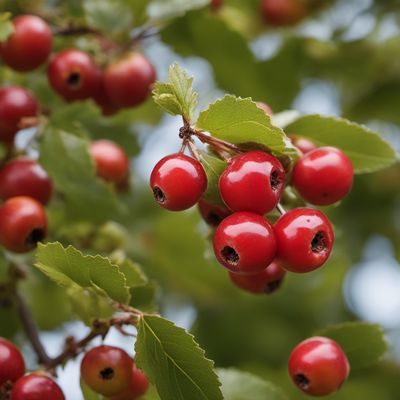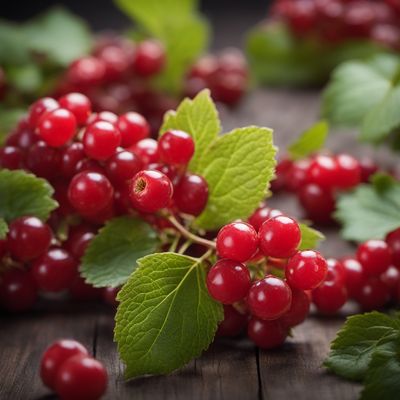
Ingredient
Bayberries
The Hidden Gems of the Forest
Bayberries are small, round fruits that have a dark purple to black color when ripe. They have a tart and slightly sweet flavor, with hints of citrus and pine. The texture of bayberries is smooth and waxy, and they are often used to make candles and natural beauty products due to their high wax content.
Origins and history
Bayberries have a rich history and cultural significance. Native to North America, they were used by Native American tribes for medicinal purposes and as a source of wax for candles. In colonial times, bayberries were boiled to extract the wax, which was then used to make candles. Today, bayberries are still harvested for their wax and are also enjoyed for their unique flavor in jams, jellies, and desserts.
Nutritional information
Bayberries are a good source of antioxidants and vitamin C. They also contain small amounts of vitamin A and potassium. Additionally, bayberries are low in calories and fat.
Allergens
There are no known allergens associated with bayberries.
How to select
When selecting bayberries, look for fruits that are plump, firm, and have a deep purple to black color. Avoid berries that are shriveled or have moldy spots. Fresh bayberries should have a pleasant aroma.
Storage recommendations
To store bayberries, place them in a breathable container or bag and refrigerate. They can be kept for up to a week. Bayberries can also be frozen for longer storage.
How to produce
Bayberry bushes can be grown from seeds or cuttings. They prefer well-drained soil and full sun. Regular pruning helps maintain the shape and health of the bush. Bayberries are typically harvested in late summer or early fall when the fruits are fully ripe.
Preparation tips
Bayberries can be used in a variety of ways. They can be made into jams, jellies, and sauces. They can also be used to flavor desserts like pies, tarts, and ice creams. Additionally, bayberries can be infused into oils or used to make scented candles and soaps.
Culinary uses
Bayberries are commonly used in jams, jellies, and desserts. They are also used in candle-making and natural beauty products.
Availability
Bayberries are commonly available in North America, particularly in the northeastern United States.
More ingredients from this category » Browse all

Hawberries
The Vibrant Delight: Exploring the World of Hawberries

Silverberries
The Shimmering Gems of the Culinary World

Elderberries
The Power of Elderberries

Red elderberries
The Vibrant Gems of the Forest

Riberries
The Vibrant Delight

Buffalo berries
The Tangy Delight of Buffalo Berries

Midland hawberries
The Hidden Gems of Midland: Exploring the Delights of Hawberries

Phalsa fruits
The Exotic Jewel of Summer: Phalsa Fruits

Dwarf elderberries
The Tiny Powerhouse: Exploring the World of Dwarf Elderberries

Guelder rose berries
Guelder Rose Berries: Nature's Vibrant Gems

Che berries
The Exotic Delight: Che Berries

Saskatoons
The Sweet Berry of the Prairies
